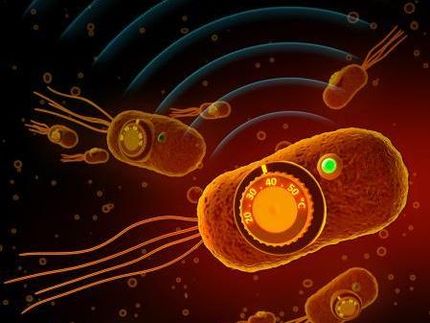UC Davis research shows how the body senses a range of hot temperatures
Heat-sensitive proteins assembled in different combinations distinguish temperatures, from a warm handshake to spicy foods
The winter sun feels welcome, but not so a summer sunburn. Research over the past 20 years has shown that proteins on the surface of nerve cells enable the body to sense several different temperatures. Now scientists have discovered how just a few of these proteins, called ion channels, distinguish perhaps dozens of discrete temperatures, from mildly warm to very hot.
Researchers showed that the building blocks, or subunits, of heat-sensitive ion channels can assemble in many different combinations, yielding new types of channels, each capable of detecting a different temperature. The discovery, in cell cultures, demonstrates for the first time that only four genes, each encoding one subunit type, can generate dozens of different heat-sensitive channels.
"Researchers in the past have assumed that because there are only four genes, there are only four heat-sensitive channels, but now we have shown that there are many more," said Jie Zheng, leader of the research and an associate professor of physiology and membrane biology at the UC Davis School of Medicine. The research publishes in the Journal of Biological Chemistry.
Ion channels are pores in cell membranes. Their ability to open and close controls the flow of charged ions, which turns neuron signalling on or off - in this case to inform the body of the temperature the neuron senses.
The researchers found that when different subunits combine, the resultant hybrid, or heteromeric, channel can detect temperatures about midway between what the "parent" channels detect.
One of the channels they studied, called TRPV1, reacts to hot temperatures -- about 100 degrees Fahrenheit. It is also responsible for the ability to sense spicy foods, such as chili peppers. A second channel, TRPV3, responds to temperatures of about 85 degrees. It also senses many food flavors such as those found in rosemary, oregano, vanilla and cinnamon that elicit a warm sensation.
When the TRPV1 and TRPV3 subunits recombine, the heteromeric channel is tuned to about 92 degrees. Surprisingly, the study showed that the hybrid channel has an even higher chemical sensitivity than the channels that made it up.
Zheng and his colleagues also showed that channels made up of TRPV1 and TRPV3 subunits react to heat at a rate about midway between that of the two constituent channel subunits. But repeatedly exposing the hybrid channels to their target temperature boosted their response, a behavior called sensitization, which TRPV3 also exhibits.
"It says 'I remember this temperature. I will make a really loud noise to tell the system that it is coming,'" Zheng said. The process allows the body to be more sensitive to temperature.
By contrast, TRPV1 typically responds the same way when repeatedly exposed to its target temperature - and sometimes even decreases its response, a process called desensitization. It helps the body to adapt to high temperature, Zheng explained.
The research builds on work the team published in 2007 demonstrating that the heat-sensitive subunits can combine to form heteromeric channels. However, at the time, scientists didn't know how these channels respond to heat. The new work shows that the channels are indeed sensitive to different temperatures.
"Knowing that there are many distinct heat-sensing ion channels now opens the way to understand how neurons encode precise temperature information, an important process that allows us to enjoy the rich spectrum of temperature in life - a memorable warm handshake, a soothing shower and a cup of hot latte - and add vanilla flavor, please," Zheng said. "It also may provide insights regarding the causes and potential treatments for temperature-sensitivity disorders, such as Raynaud's syndrome."
Raynaud's syndrome is a condition that causes some areas of the body - such as fingers, toes, the tip of the nose and ears - to feel numb and cool in response to cold temperatures or stress. The cause is unknown.
The scientists introduced the genes for TRPV1 and TRPV3 channel subunits to cultured human kidney cells. They tagged the genes with fluorescent markers to confirm when the resulting proteins had combined to form a new channel complex.
Once functional channels were formed, the researchers used a glass pipette with a very fine tip to record ion channels' responses to temperature changes.
In order to rapidly increase the temperature, they built an apparatus that allowed them to deliver an infrared laser beam to the cell. The method allowed them to heat the channel more than a thousand times faster than commercially available heating devices.























































